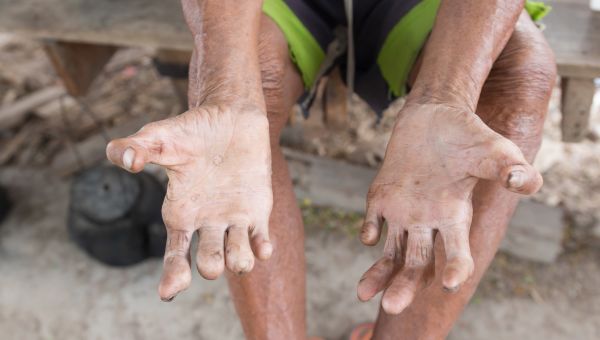5 weird diseases you thought were gone
These blasts from the past continue to make people sick.

Modern medicine can do amazing things, like eliminate diseases that once killed millions. But some are tougher to get rid of than others. You don’t hear about these five conditions too often anymore, but that doesn’t mean they’re completely gone.
Check out which diseases are still around—and how likely they are to make you sick.

Leprosy
If you’ve read the Christian bible, the Jewish Torah or the Muslim Quran, you’ve probably stumbled across mentions of leprosy. Also known as Hansen’s disease, leprosy comes from bacteria, causes skin lesions, and, if left untreated, nerve damage.
Contrary to popular belief, it's not highly contagious and is easily treated, especially if it's caught early; the World Health Organization offers leprosy treatment free of charge. Leprosy cases worldwide have dropped 99 percent since 1983, but there were still more than 176,000 people with the disease at the end of 2015.

Plague
Bubonic plague, also known as the Black Death, brought Europe to its knees in the 14th century, killing nearly two thirds of the population. But then it disappeared, never to be seen again, right? Wrong. The bacteria causing the plague, Y. pestis, re-emerged during a 19th Century Chinese outbreak, claiming about 10 million lives over 20 years.
Bubonic plague causes swollen lymph nodes (known as buboes), as well as fever, headache, chills and weakness. It’s spread by fleas; fleas from ground squirrels are a common culprit in the modern era. While the last US outbreak of plague occurred in Los Angeles in 1924, cases happen every year. There were 16 reported cases of plague in the US in 2015.

Polio
Before Jonas Salk developed his vaccine in 1955, polio was every parent’s nightmare. The incurable virus mainly struck children under the age of 5. It can cause meningitis, and about 1 in 200 people are paralyzed. Between 2 and 10 percent of those paralyzed died when their breathing muscles stopped working. Adults caught polio too; President Franklin Delano Roosevelt contracted the disease at age 39 in 1921.
Today, polio is all but eradicated. There were just 74 cases worldwide in 2015, compared to more than 350,000 in 1988. Pakistan, Afghanistan and Nigeria are the only countries that still have outbreaks.
Image credit: Harris and Ewing, Wikipedia

Smallpox
Smallpox struck fear into people for centuries and perhaps millennia—smallpox-like rashes have been found on Egyptian mummies from the 3rd century BCE. Highly contagious and fatal about 30 percent of the time, it started with a high fever and body aches and progressed to a rash, pustules and scabs. About three in 10 people died.
Smallpox was the first disease for which a successful vaccine was developed, and was declared eradicated worldwide in 1980. For decades it was thought that the only two samples in the world remained in a Russian lab and at the CDC’s headquarters. That changed in 2014 when federal employees discovered six vials from the 1950s in a FDA storage room. No outbreaks have been reported.

Measles
Before the measles vaccine came along in 1963, nearly everyone under the age of 15 got measles. The disease was declared eliminated in the US in 2000, but recent cases, including a 2015 outbreak linked to California’s Disneyland, showed it has a stubborn tendency to stick around.
Measles starts with a high fever, cough, runny nose and sometimes pinkeye, and can progress to pneumonia or encephalitis. It's occasionally fatal. Measles is still common in many parts of the world and travelers bring the disease to the US frequently. Outbreaks tend to happen when people are unvaccinated, thanks in part to the myth that the measles mumps rubella vaccine causes autism.
More On


video

slideshow


video


video
